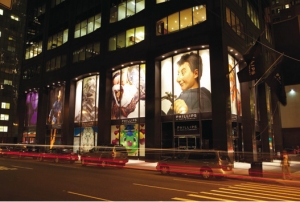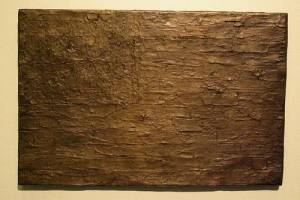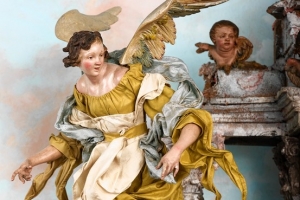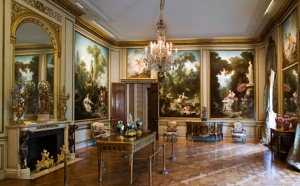|
Displaying items by tag: art institute of chicago

This fall, Phillips will sell photographs from the Art Institute of Chicago’s illustrious collection. Works by Robert Frank, Henri Cartier-Bresson, Edward Weston and Irving Penn will be offered during sales in October in New York and in November in London.
The Art Institute of Chicago began organizing photography exhibitions in 1900 and has been building its own collection for nearly 65 years. Ellen Sandor, Chair and Curator of the Art Institute of Chicago’s photography department, said, “In 2014 we celebrate our fortieth anniversary as a separate curatorial department and the fifth anniversary of our dedicated galleries in the Art Institute’s Modern Wing. Those two anniversaries represent continuity and change—both essential to our progress. We have spent three and a half years to assess our holdings, with a view to refining and diversifying the collection as well as better understanding the treasures that we possess. Proceeds from the sale will support future acquisitions, and we are grateful to Phillips for working with such care and consideration on this sale.”
The two sales will be complemented by an online selling exhibition in December. Highlights from the collection will go on view in New York, Chicago and London prior to the sales.

The American contemporary artist, Jasper Johns, testified in a Manhattan federal court on Thursday, January 23, saying that he never authorized foundry owner, Brian Ramnarine, to make a bronze copy of his Sculptmetal painting, ‘Flag.’ Johns had given Ramnarine a mold of the work in 1990 with instructions to make a single wax cast mold.
Prosecutors are trying to prove that Ramnarine, owner of the Empire Bronze Art Foundry in Long Island City, Queens, attempted to sell an unauthorized bronze sculpture of the painting in 2010. Johns stated in court that Ramnarine had never returned the original mold to him and that somebody later showed him a flag sculpture that he had never seen before, but he believed had been made from the mold in Ramnarine’s possession.
Ramnarine attempted to seek a buyer for the alleged Johns sculpture, telling interested parties that he was willing to sell the work for $11 million. Potential buyers were suspicious of Ramnarine as Johns had made only six ‘Flag’ sculptures and had kept several in his own possession (another is owned by the Art Institute of Chicago and another was given to President John F. Kennedy by the art dealer Leo Castelli). In an attempt to quell wariness, Ramnarine would provide interested parties with a letter said to be from Johns as well as a certificate of authenticity. Johns said he had nothing to do with either document.
Ramnarine has pleaded not guilty to the charges levelled against him.

In honor of the holiday season, the Art Institute of Chicago is exhibiting a recently acquired Neapolitan crèche (a set of statues depicting the scene of Jesus Christ’s birth) from the mid-18th century. The Art Institute’s crèche features over 200 intricately carved figures, animals and items of food and drink set in an ornate 14-by-15¼-foot Baroque cabinet with an elaborately painted backdrop. The work is one of the very few examples of its kind found outside of Naples.
Crèches date back to 4th century Rome, but it wasn’t until the 13th and 14th centuries, in part due to their association with Saint Francis of Assisi, that such scenes became a permanent feature of Neapolitan churches. During the 18th century, crèches took on a more dramatic, theatrical style and were often commissioned by churches, wealthy citizens, and members of the nobility.
The Art Institute of Chicago acquired the crèche from a Neapolitan collector in April. The work will be on view through January 8, 2014 and is slated to be shown once a year for six weeks during the holiday season.

The Art Institute of Chicago has received a $1 million grant to fund a five-year partnership with the Chicago Public Schools. The goal of the collaboration is to foster students’ engagement with original artworks. Made possible by a gift from Cari and Michael J. Sacks to the Institute’s Department of Museum Education, TEAM: Thinking Experience in an Art Museum, will encourage critical and creative thinking in the city’s public schools.
Michael Sacks, a longtime trustee of the Institute, is chairman/CEO of Grosvenor Capital Management. Sacks and his wife, Carin, have made other generous donations in the past including a $5 million gift to Northwestern University back in August. The Sacks’ said, “We are committed to providing support for Chicago Public School students and want to share our love of art by making the museum’s wonderful collection accessible to all.”
TEAM was developed by Art Institute educators and Chicago Public School teachers and will include implementing curricula based on original works of art and tours and engagement with the museum. Educator training and direct classroom support will be part of the initiative, which will take place over the course of a two-year cycle.

The Art Institute of Chicago has closed the third floor of its Modern Wing for seven months so that the museum can refinish floors, pedestals and walls and adjust lighting. The third floor houses the museum’s collection of European modern art, which will be sent to the Kimbell Art Museum in Fort Worth, TX until work on the four-year-old gallery reaches completion in mid-April 2014.
While some have found the renovation of the next-to-new gallery odd, Douglas Druick, the Art Institute’s president, said that the work has been long-planned. The Art Institute has been getting record traffic, which can put added strain on an exhibition space.
Approximately 100 masterpieces from the Art Institute’s collection will be on view at the Kimbell in the exhibition The Age of Picasso and Matisse: Modern Masters from the Art Institute of Chicago. The show includes Pablo Picasso’s Old Guitarist (1903) and Joan Miro’s Policeman (1925). The Age of Picasso and Matisse will be on view at the Kimbell Art Museum from October 6, 2013 through February 16, 2014.
Historic Deerfield’s President Philip Zea will lead a trip September 6-9, 2013 to view premier collections of antiques and decorative arts in Chicago and Milwaukee.
The trip includes special tours of five outstanding private collections and three remarkable area museums. Private collections include two top American decorative arts collections, an American folk art collection, Crab Tree Farm, and the MacLean Map and Book Collection. Special museum tours include the Art Institute of Chicago, Driehaus Museum, the Milwaukee Art Museum and a presentation and private viewing at the Chipstone Foundation’s Fox Point Georgian mansion of the foundation’s founders Stanley and Polly Stone. You can register by calling 413-775-7176. A few slots are available. See www.historic-deerfield.org/trip for details.

Boston-based collector, Dorothy Braude Edinburg, has gifted nearly 1,000 works of art to the Art Institute of Chicago, making it one of the most significant donations in the museum’s history. The gift includes approximately 800 works on paper – primarily European prints and drawings from Old Mast to modern – and 150 works of Asian art. The donation will complement the considerable long-term loans and prior gifts made by Edinburg including works by Vincent van Gogh (1853-1890), Paul Gauguin (1848-1903), Pablo Picasso (1881-1973) and Henri Matisse (1869-1954).
The most recent gift, along with Edinburg’s previous donations, is part of the Harry B. and Bessie K. Braude Memorial Collection, which honors Edinburg’s parents. Highlights include nearly 50 extremely rare Japanese volumes, many of which are from the Edo period, a sorely unrepresented period in American museum collections; Chinese celadons from the 12th and 13th centuries; and prints and drawings by Edgar Degas (1834-1917), Claude Monet (1840-1926), Edvard Munch (1863-1944) and James McNeill Whistler (1834-1903), among many others.
Edinburg said, “I have never thought of my collection as a personal endeavor. I have always believed that it should ultimately enter a major museum and serve a broad public…I have seen the Art Institute as the eventual home for my entire collection for many years, and I am thrilled to taking another step forward with this gift in honor of my parents.”

In honor of Art Museum Day, approximately 180 art institutions across the United States will offer free entry or reduced admission rates on May 18, 2013. The event, which is in its 4th year, was planned by the Association of Art Museum Directors and is meant to unite the organization’s members. Many institutions will also offer special events and programming in honor of Art Museum Day, which coincides with International Museum Day for countries outside of the U.S.
Participating institutions include some of the most renowned museums in the country such as the Fine Arts Museums of San Francisco, the J. Paul Getty Museum (Los Angeles), the Phillips Collection (Washington, D.C.), the High Museum of Art (Atlanta), the Art Institute of Chicago, the Baltimore Museum of Art, the Institute of Contemporary Art, Boston, the Nelson-Atkins Museum of Art, the Museum of Modern Art (New York), and the Frick Collection (New York). A full list of participating museums can be seen here.
This year’s Art Museum Day theme is museums (memory + creativity) = social change.

On May 1, 2013 the Van Gogh Museum in Amsterdam will re-open after being closed for months due to ongoing renovations. The exhibition that will inaugurate the newly updated space is Van Gogh at Work, an extensive overview of Vincent van Gogh’s (1853-1890) oeuvre that happens to coincide with the 160th anniversary of the artist’s birth. What the Van Gogh Museum kept quiet until now is that the exhibition will reveal research amassed during an eight-year analysis of the artist’s work.
The project, which was led by scientists at Shell in collaboration with the Dutch Cultural Heritage Agency and curators at the Van Gogh Museum, entailed analyzing hundreds of van Gogh’s canvases, pigments, letters, and notebooks. The research provided previously unknown insights into van Gogh’s temperament and personality. Contrary to popular belief spurred by the artist’s struggles with mental illness, van Gogh was not a manic painter, but painstakingly methodical. The use of an electric microscope and X-ray fluorescence spectrometry revealed that van Gogh used grids to accurately portray proportions and to create precise depth of field in his early landscapes.
Another insight the researchers uncovered involved van Gogh’s pigments. Tests done at the Shell Global Solutions labs revealed that some of the pigments used by van Gogh were chemically unstable and faded prematurely. In particular, scientists discovered that the color of the walls in van Gogh’s seminal painting The Bedroom was inaccurate. Van Gogh had used red and blue paints to create a violet hue but the red faded, leaving behind a much bluer color than he intended.
Beginning in September, the Van Gogh Museum will exhibit two versions of The Bedroom – one from its own collection and one from the Art Institute of Chicago’s collection. Van Gogh painted three versions of his room in Arles between 1888 and 1889 and all three of them have the same blue-hued walls. The presentation will also include a digital reconstruction of what the painting may have looked like when van Gogh first created it.
Van Gogh at Work will be on view through January 12, 2014.

The Art Institute of Chicago announced that they have acquired Thomas Hart Benton’s (1889-1975) Cotton Pickers (1945), a critical example of American Regionalism, a realist modern art movement that gained popularity during the 1930s. Regionalist artists forsook urban life in favor of creating scenes of everyday rural life in America. Benton was a pioneer of the movement and is considered a pivotal figure in American art.
Cotton Pickers is a rare example of Benton’s large-scale paintings and it is the first oil painting by the artist to enter the museum’s collection. It will bolster the Art Institute’s world-renowned collection of paintings from the period, which includes Grant Wood’s (1891-1942) iconic painting American Gothic (1930) and John Steuart Curry’s (1897-1946) Hogs and Rattlesnakes (1930). The addition of Cotton Pickers helps the Art Institute tell the story of Regionalism more fully. Judith Barter, the Field-McCormick Chair and Curator in the American Art Department, considers the painting one of the museum’s most important acquisitions in the last several decades.
Cotton Pickers will be exhibited alongside American Gothic and Hogs and Rattlesnakes.
|
|
|
|
|